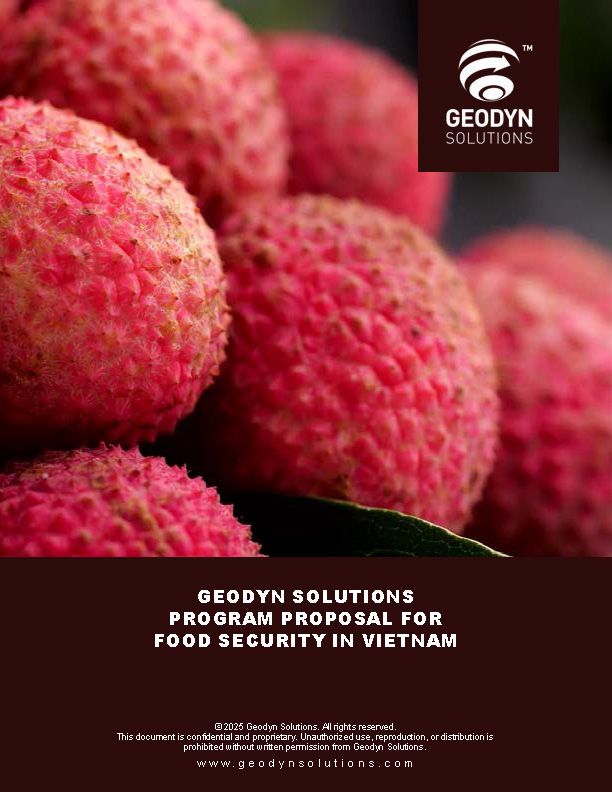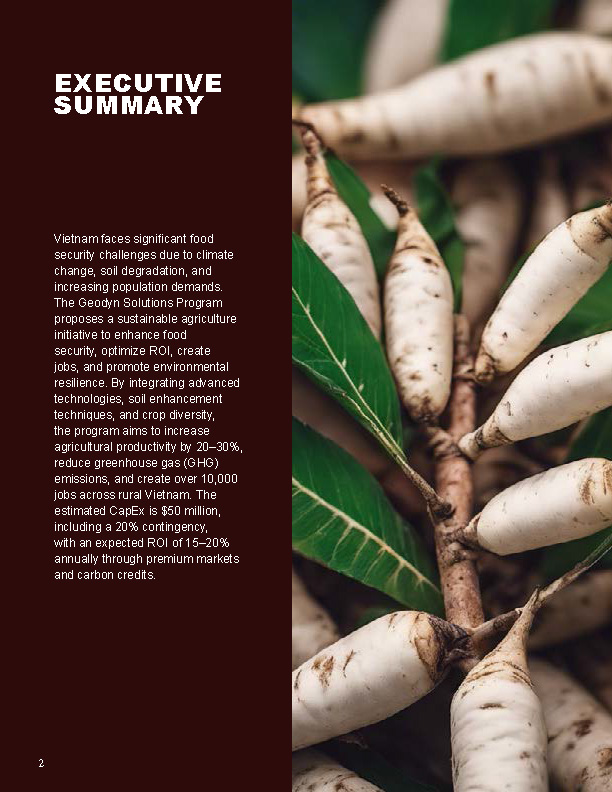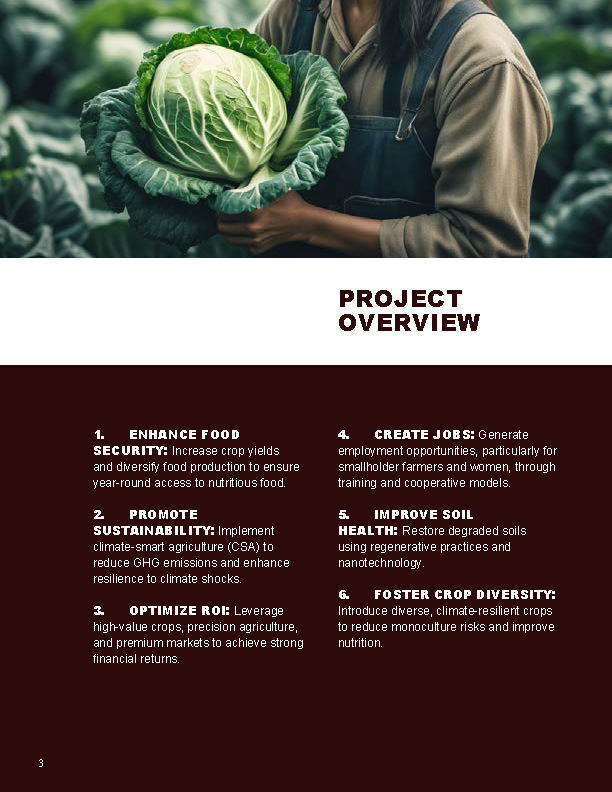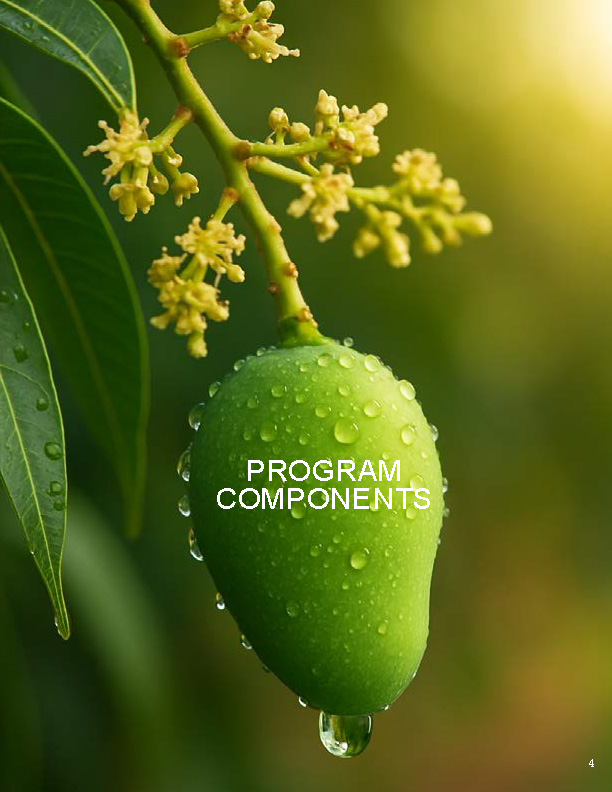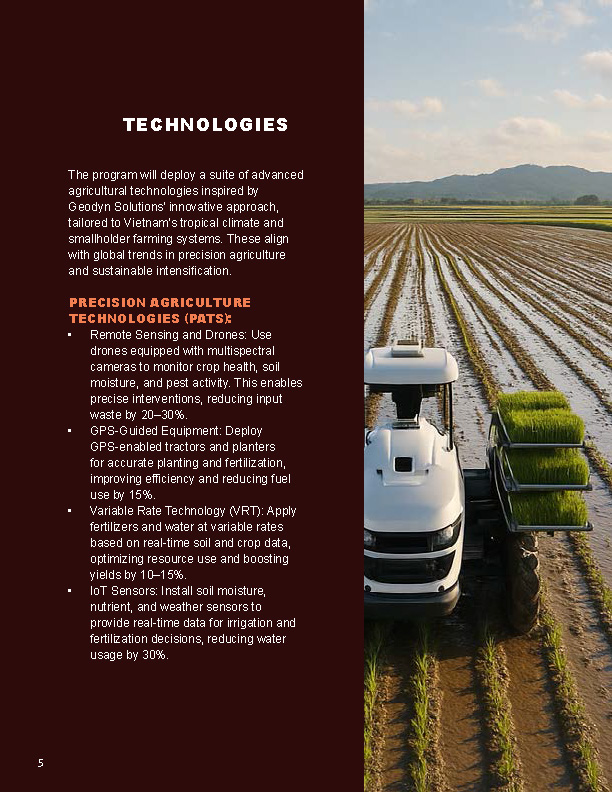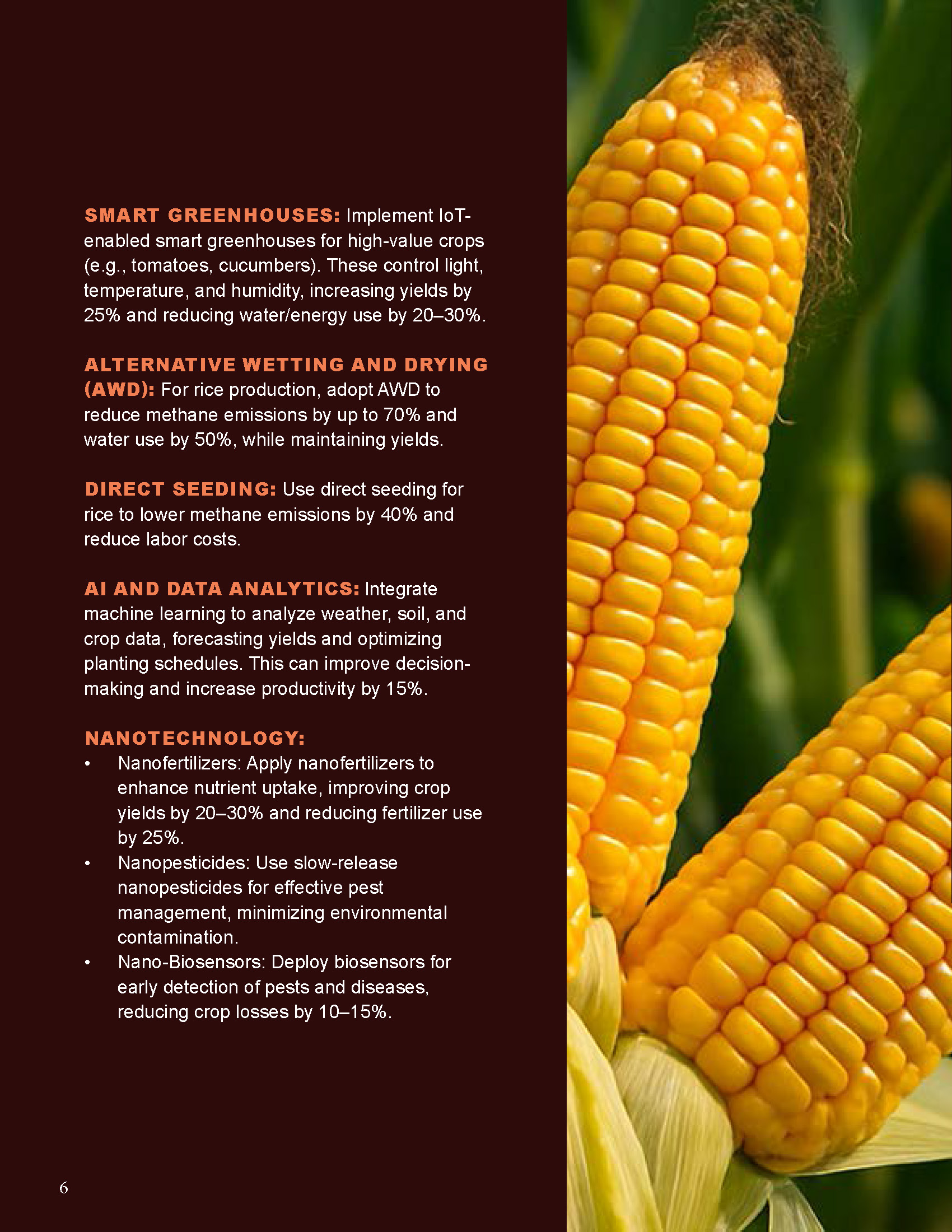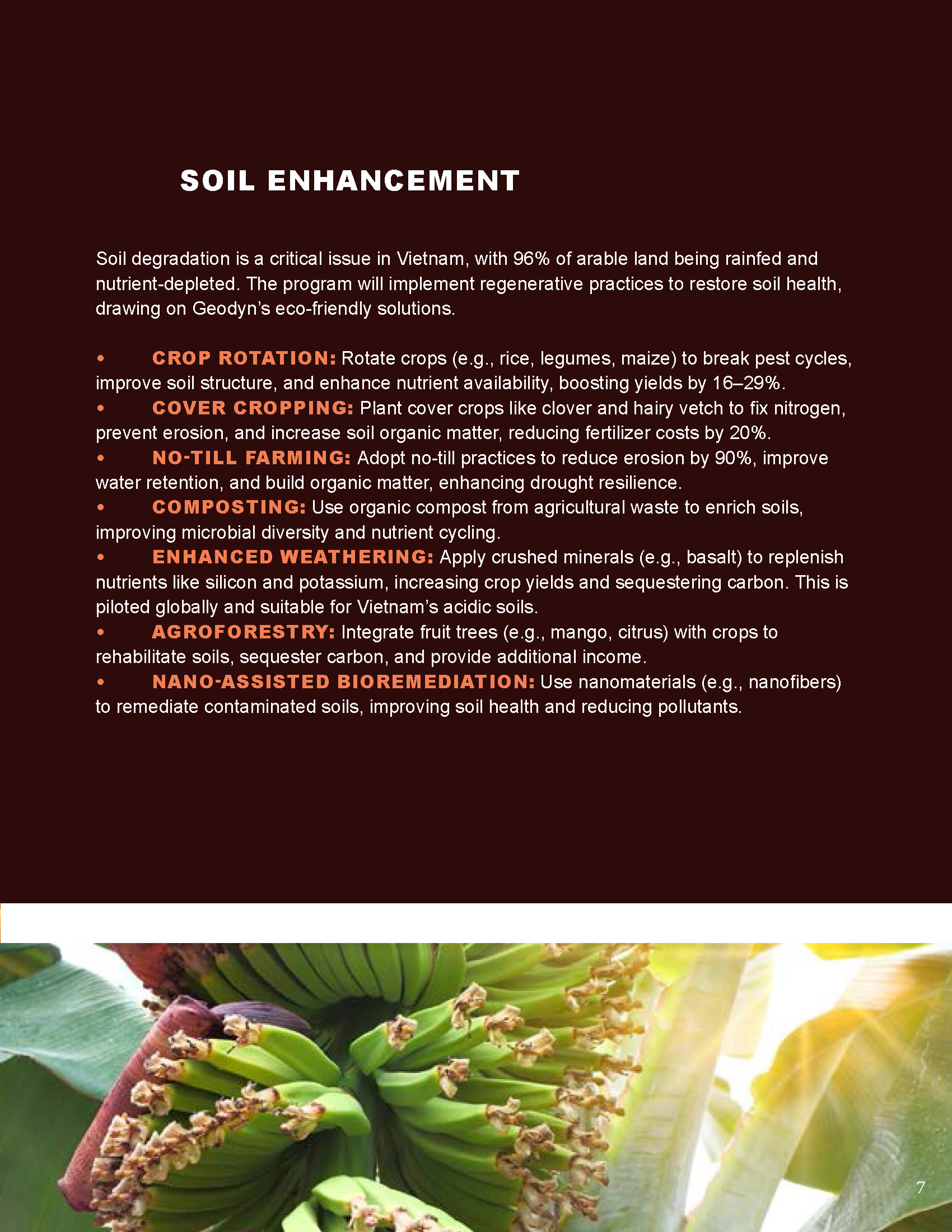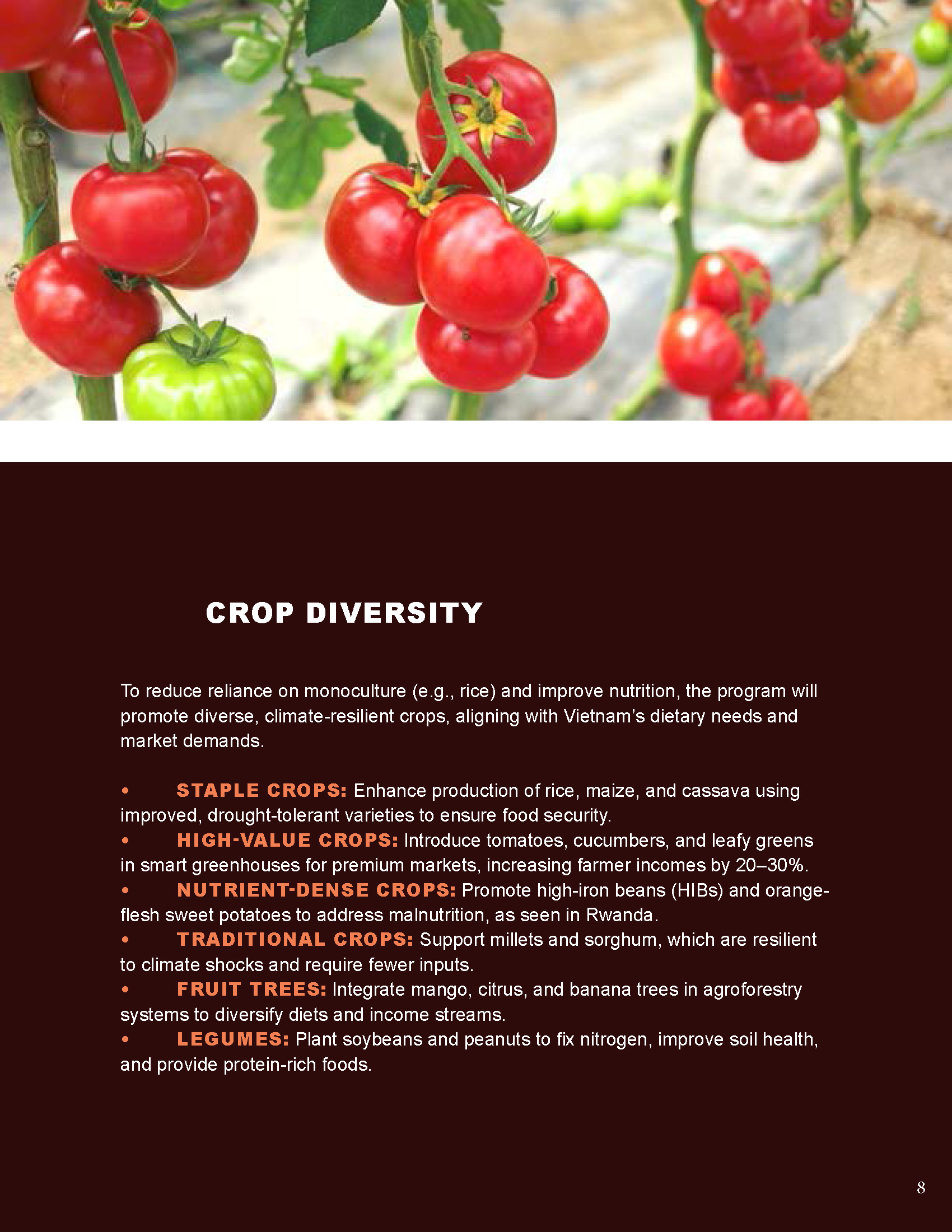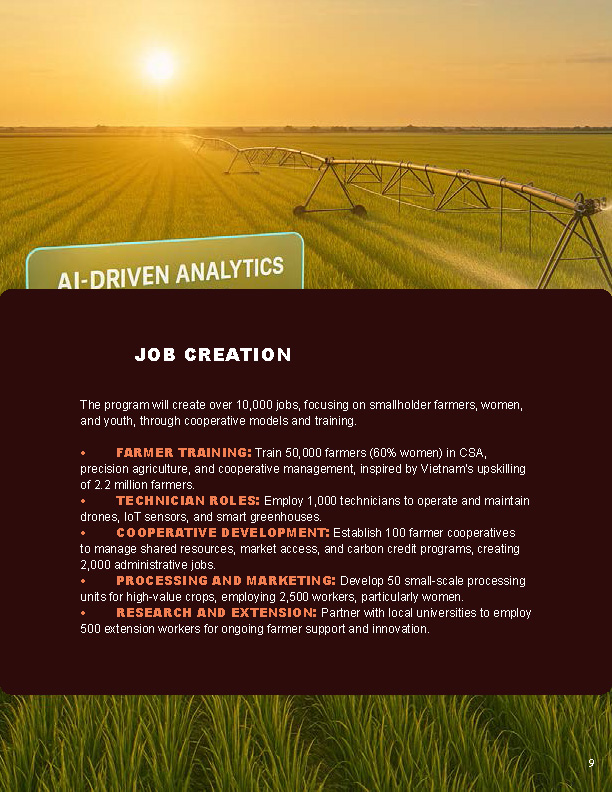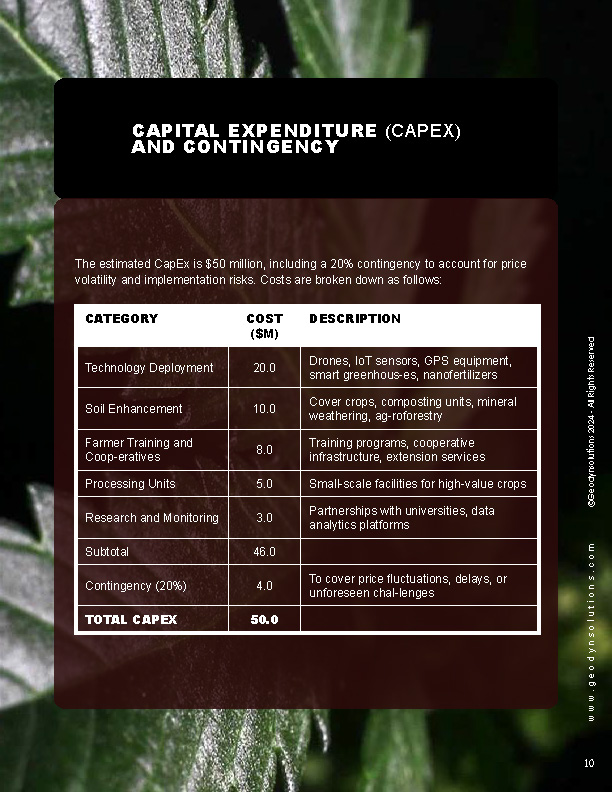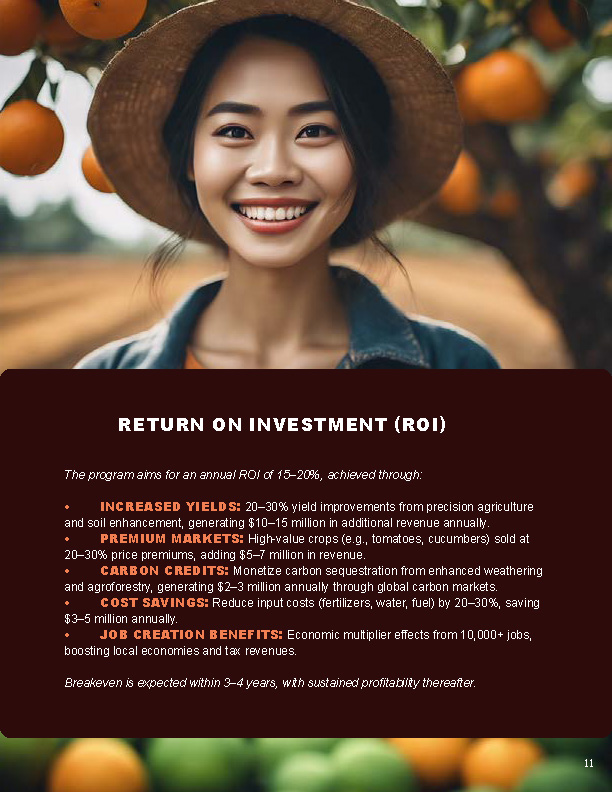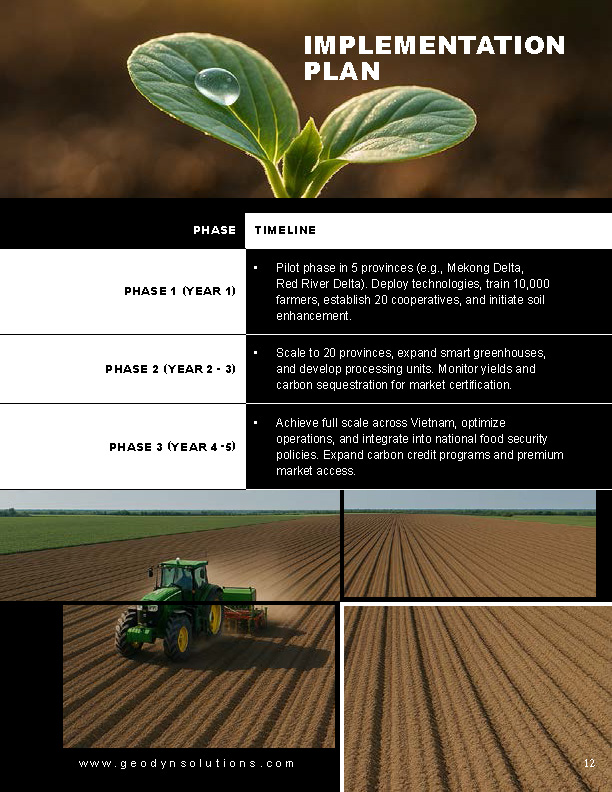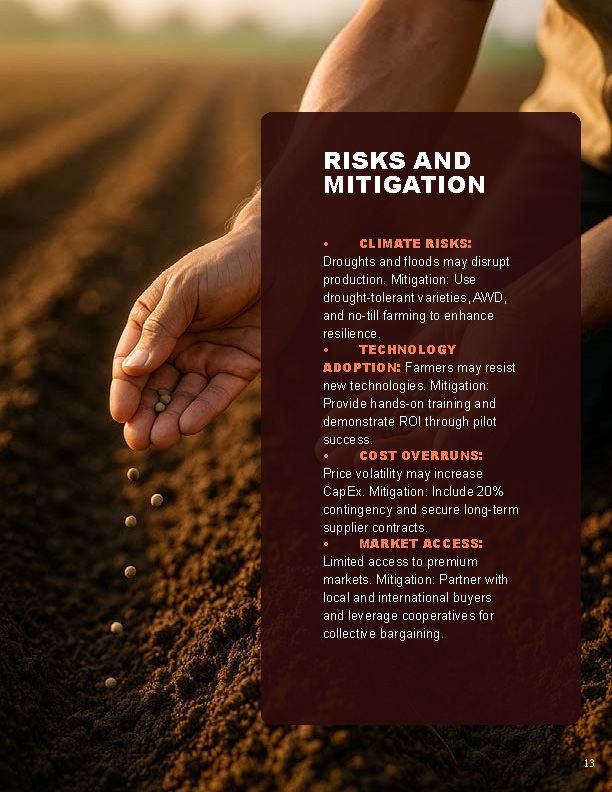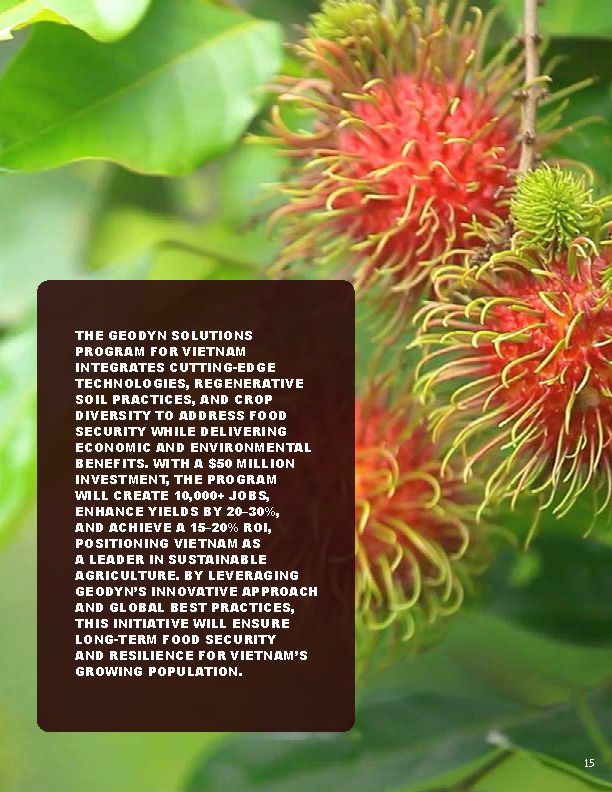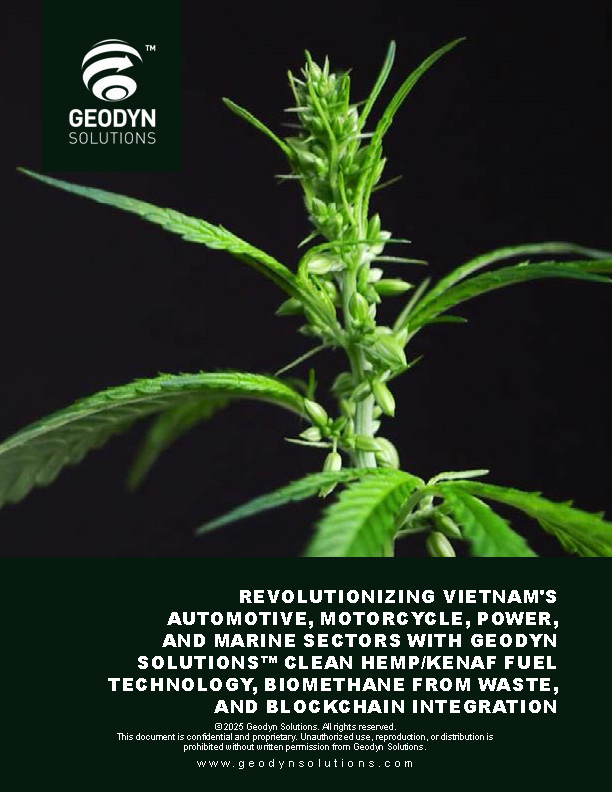Geodyn Solutions Program Proposal for Food Security in Vietnam
Vietnam faces significant food security challenges due to climate change, soil degradation, and increasing population demands. The Geodyn Solutions Program proposes a sustainable agriculture initiative to enhance food security, optimize ROI, create jobs, and promote environmental resilience. By integrating advanced technologies, soil enhancement techniques, and crop diversity, the program aims to increase agricultural productivity by 20–30%, reduce greenhouse gas (GHG) emissions, and create over 10,000 jobs across rural Vietnam. The estimated CapEx is $50 million, including a 20% contingency, with an expected ROI of 15–20% annually through premium markets and carbon credits.
Program Objectives
- Enhance Food Security: Increase crop yields and diversify food production to ensure year-round access to nutritious food.
- Promote Sustainability: Implement climate-smart agriculture (CSA) to reduce GHG emissions and enhance resilience to climate shocks.
- Optimize ROI: Leverage high-value crops, precision agriculture, and premium markets to achieve strong financial returns.
- Create Jobs: Generate employment opportunities, particularly for smallholder farmers and women, through training and cooperative models.
- Improve Soil Health: Restore degraded soils using regenerative practices and nanotechnology.
- Foster Crop Diversity: Introduce diverse, climate-resilient crops to reduce monoculture risks and improve nutrition.
Program Components
- Technologies
The program will deploy a suite of advanced agricultural technologies inspired by Geodyn Solutions’ innovative approach, tailored to Vietnam’s tropical climate and smallholder farming systems. These align with global trends in precision agriculture and sustainable intensification.
- Precision Agriculture Technologies (PATs):
- Remote Sensing and Drones: Use drones equipped with multispectral cameras to monitor crop health, soil moisture, and pest activity. This enables precise interventions, reducing input waste by 20–30%.
- GPS-Guided Equipment: Deploy GPS-enabled tractors and planters for accurate planting and fertilization, improving efficiency and reducing fuel use by 15%.
- Variable Rate Technology (VRT): Apply fertilizers and water at variable rates based on real-time soil and crop data, optimizing resource use and boosting yields by 10–15%.
- IoT Sensors: Install soil moisture, nutrient, and weather sensors to provide real-time data for irrigation and fertilization decisions, reducing water usage by 30%.
- Smart Greenhouses: Implement IoT-enabled smart greenhouses for high-value crops (e.g., tomatoes, cucumbers). These control light, temperature, and humidity, increasing yields by 25% and reducing water/energy use by 20–30%.
- Alternative Wetting and Drying (AWD): For rice production, adopt AWD to reduce methane emissions by up to 70% and water use by 50%, while maintaining yields.
- Direct Seeding: Use direct seeding for rice to lower methane emissions by 40% and reduce labor costs.
- AI and Data Analytics: Integrate machine learning to analyze weather, soil, and crop data, forecasting yields and optimizing planting schedules. This can improve decision-making and increase productivity by 15%.
- Nanotechnology:
- Nanofertilizers: Apply nanofertilizers to enhance nutrient uptake, improving crop yields by 20–30% and reducing fertilizer use by 25%.
- Nanopesticides: Use slow-release nanopesticides for effective pest management, minimizing environmental contamination.
- Nano-Biosensors: Deploy biosensors for early detection of pests and diseases, reducing crop losses by 10–15%.
- Soil Enhancement
Soil degradation is a critical issue in Vietnam, with 96% of arable land being rainfed and nutrient-depleted. The program will implement regenerative practices to restore soil health, drawing on Geodyn’s eco-friendly solutions.
- Crop Rotation: Rotate crops (e.g., rice, legumes, maize) to break pest cycles, improve soil structure, and enhance nutrient availability, boosting yields by 16–29%.
- Cover Cropping: Plant cover crops like clover and hairy vetch to fix nitrogen, prevent erosion, and increase soil organic matter, reducing fertilizer costs by 20%.
- No-Till Farming: Adopt no-till practices to reduce erosion by 90%, improve water retention, and build organic matter, enhancing drought resilience.
- Composting: Use organic compost from agricultural waste to enrich soils, improving microbial diversity and nutrient cycling.
- Enhanced Weathering: Apply crushed minerals (e.g., basalt) to replenish nutrients like silicon and potassium, increasing crop yields and sequestering carbon. This is piloted globally and suitable for Vietnam’s acidic soils.
- Agroforestry: Integrate fruit trees (e.g., mango, citrus) with crops to rehabilitate soils, sequester carbon, and provide additional income.
- Nano-Assisted Bioremediation: Use nanomaterials (e.g., nanofibers) to remediate contaminated soils, improving soil health and reducing pollutants.
- Crop Diversity
To reduce reliance on monoculture (e.g., rice) and improve nutrition, the program will promote diverse, climate-resilient crops, aligning with Vietnam’s dietary needs and market demands.
- Staple Crops: Enhance production of rice, maize, and cassava using improved, drought-tolerant varieties to ensure food security.
- High-Value Crops: Introduce tomatoes, cucumbers, and leafy greens in smart greenhouses for premium markets, increasing farmer incomes by 20–30%.
- Nutrient-Dense Crops: Promote high-iron beans (HIBs) and orange-flesh sweet potatoes to address malnutrition, as seen in Rwanda.
- Traditional Crops: Support millets and sorghum, which are resilient to climate shocks and require fewer inputs.
- Fruit Trees: Integrate mango, citrus, and banana trees in agroforestry systems to diversify diets and income streams.
- Legumes: Plant soybeans and peanuts to fix nitrogen, improve soil health, and provide protein-rich foods.
- Job Creation
The program will create over 10,000 jobs, focusing on smallholder farmers, women, and youth, through cooperative models and training.
- Farmer Training: Train 50,000 farmers (60% women) in CSA, precision agriculture, and cooperative management, inspired by Vietnam’s upskilling of 2.2 million farmers.
- Technician Roles: Employ 1,000 technicians to operate and maintain drones, IoT sensors, and smart greenhouses.
- Cooperative Development: Establish 100 farmer cooperatives to manage shared resources, market access, and carbon credit programs, creating 2,000 administrative jobs.
- Processing and Marketing: Develop 50 small-scale processing units for high-value crops, employing 2,500 workers, particularly women.
- Research and Extension: Partner with local universities to employ 500 extension workers for ongoing farmer support and innovation.
- Capital Expenditure (CapEx) and Contingency
The estimated CapEx is $50 million, including a 20% contingency to account for price volatility and implementation risks. Costs are broken down as follows:
Category | Cost ($M) | Description |
Technology Deployment | 20.0 | Drones, IoT sensors, GPS equipment, smart greenhouses, nanofertilizers |
Soil Enhancement | 10.0 | Cover crops, composting units, mineral weathering, agroforestry |
Farmer Training and Cooperatives | 8.0 | Training programs, cooperative infrastructure, extension services |
Processing Units | 5.0 | Small-scale facilities for high-value crops |
Research and Monitoring | 3.0 | Partnerships with universities, data analytics platforms |
Subtotal | 46.0 | |
Contingency (20%) | 4.0 | To cover price fluctuations, delays, or unforeseen challenges |
Total CapEx | 50.0 |
- Return on Investment (ROI)
The program aims for an annual ROI of 15–20%, achieved through:
- Increased Yields: 20–30% yield improvements from precision agriculture and soil enhancement, generating $10–15 million in additional revenue annually.
- Premium Markets: High-value crops (e.g., tomatoes, cucumbers) sold at 20–30% price premiums, adding $5–7 million in revenue.
- Carbon Credits: Monetize carbon sequestration from enhanced weathering and agroforestry, generating $2–3 million annually through global carbon markets.
- Cost Savings: Reduce input costs (fertilizers, water, fuel) by 20–30%, saving $3–5 million annually.
- Job Creation Benefits: Economic multiplier effects from 10,000+ jobs, boosting local economies and tax revenues.
Breakeven is expected within 3–4 years, with sustained profitability thereafter.
Implementation Plan
- Year 1: Pilot phase in 5 provinces (e.g., Mekong Delta, Red River Delta). Deploy technologies, train 10,000 farmers, establish 20 cooperatives, and initiate soil enhancement.
- Year 2–3: Scale to 20 provinces, expand smart greenhouses, and develop processing units. Monitor yields and carbon sequestration for market certification.
- Year 4–5: Achieve full scale across Vietnam, optimize operations, and integrate into national food security policies. Expand carbon credit programs and premium market access.
Risks and Mitigation
- Climate Risks: Droughts and floods may disrupt production. Mitigation: Use drought-tolerant varieties, AWD, and no-till farming to enhance resilience.
- Technology Adoption: Farmers may resist new technologies. Mitigation: Provide hands-on training and demonstrate ROI through pilot success.
- Cost Overruns: Price volatility may increase CapEx. Mitigation: Include 20% contingency and secure long-term supplier contracts.
- Market Access: Limited access to premium markets. Mitigation: Partner with local and international buyers and leverage cooperatives for collective bargaining.
Policy Recommendations
- Government Support: Subsidize initial technology costs and provide tax incentives for sustainable practices, as seen in Uzbekistan’s agriculture reforms.
- Public-Private Partnerships: Collaborate with local agribusinesses to scale processing and marketing, similar to World Bank initiatives in Jordan.
- Carbon Market Integration: Align with global carbon credit frameworks to monetize GHG reductions, following European and African pilots.
- Extension Services: Strengthen Vietnam’s agricultural extension network to support ongoing farmer training and technology adoption.
Conclusion
The Geodyn Solutions Program for Vietnam integrates cutting-edge technologies, regenerative soil practices, and crop diversity to address food security while delivering economic and environmental benefits. With a $50 million investment, the program will create 10,000+ jobs, enhance yields by 20–30%, and achieve a 15–20% ROI, positioning Vietnam as a leader in sustainable agriculture. By leveraging Geodyn’s innovative approach and global best practices, this initiative will ensure long-term food security and resilience for Vietnam’s growing population.
